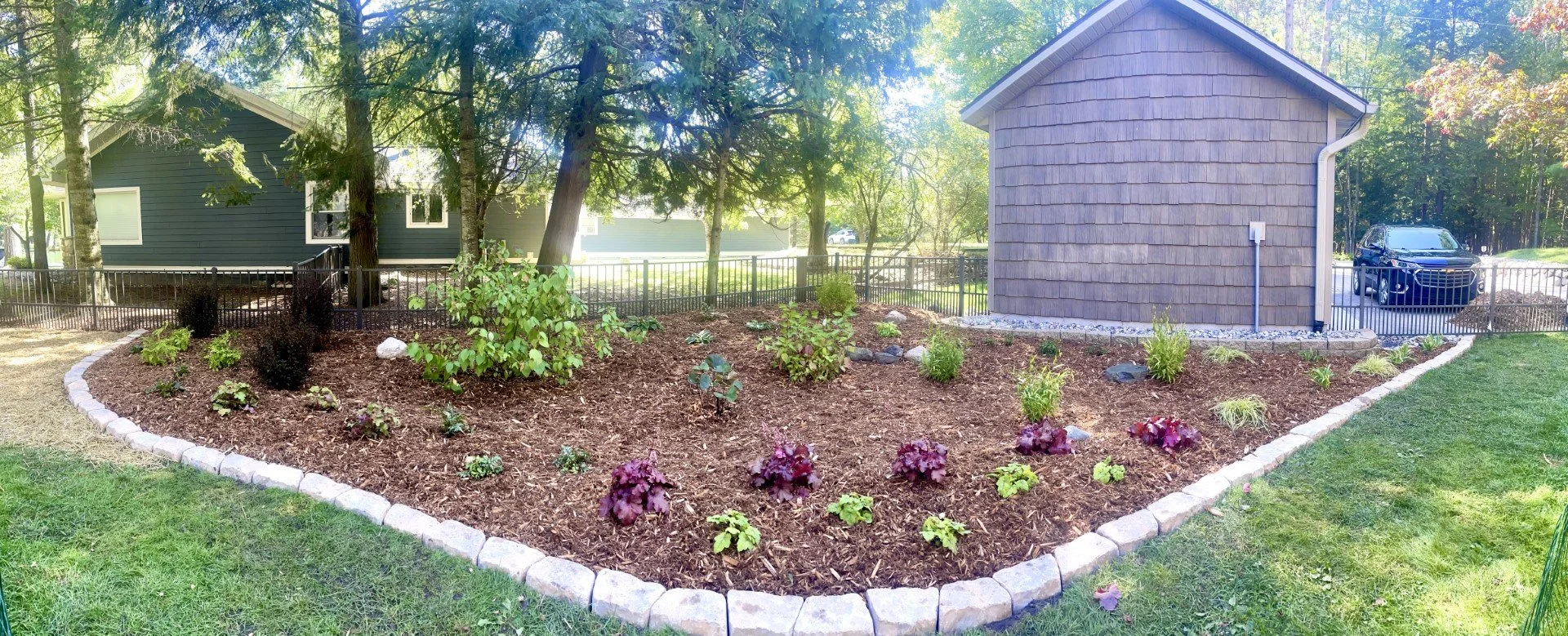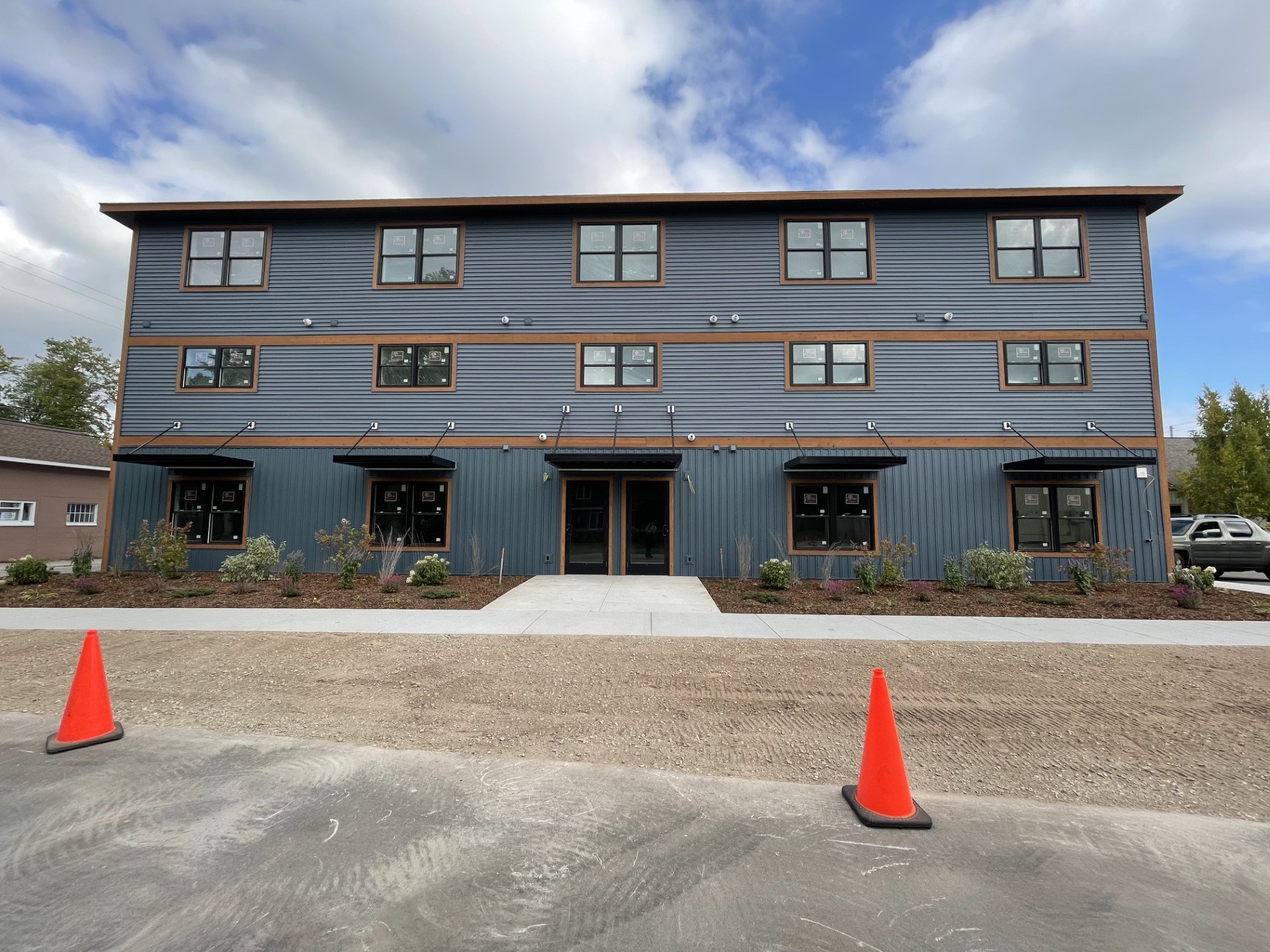BEFORE:
Based on the homeowners description of where water collects, I began placing flags to delineate the functional layout of a future rain garden.
The husband, a retired engineer for General Motors, was skeptical in the success of this plan.
This project is located on Torch River, MI. Owned by a deserving and hardworking, retired, married couple welcoming a new Grandchild into their lives and yard.
During my initial visit to this property, we identified the issue to tackle as flooding in the lawn. This was a new and unexpected consequence for the home owners of 10 years after they built and added a second garage.
This caused an increase in impermeable surfaces that rainwater can not drain through. Runoff from heavy rain was being directed to the lawn and creating standing water.
Goal: Create a rain garden to control runoff from heavy rains; decrease flooding in problem areas; install water-loving shade plants that filter runoff before it reenters lakes and rivers.
Manipulating Water Flow
Driveway is slightly sloped to direct drainage at a small grate connected to underground drainage pipe. Being right on the river, the water table is high, making this current system insufficient in periods of substantial rainfall.
Confident in my approach, I drew a topography plan to demonstrate the grading of the garden and communicate with my clients our approach to channeling the runoff.
The next step was to dig!
Design // Install :
Our final step was in the addition of water-loving plants to help gulp up the temporarily standing pond when it occurred.
I chose perennials from local nurseries that can handle standing water-but once established, can also handle periods of drought.
Gardens are dynamic ecosystems.
After successfully tackling the flooding issue, nature responded the following year by sending over wildlife for a buffet. Despite the yard being fenced in, the critters sidestepped the obstacles and snacked feverishly on the hard work.
To this day we are battling critters and experimentally choosing plants that stand up to the local deer and rabbit populations. We’ve found unbothered success with: Brunnera, Helleborus, Ligularia, Northern Sea Oats, Iris and Sedges.
Just days after grading the ground, we were gifted a big rainfall.
My clients sent me a worried, but hopeful, photo of where the water was collecting. The puddles were no longer in the lawn, but instead forming a muddy swamp where it’d been channeled.
The husband worried we might have a new problem on our hands, although I assured him that this is exactly how we wanted the water flow to respond to our actions.
BEFORE:
Goal: New build Garden Install for Condos and Commercial Space
Building the Soil
Sandy, compact soil post-building construction. Amend existing soil with the addition of compost and mix with existing soil medium. Adding organic matter to the soil increases water retention, and the ability for plants to take up nutrients. It’s crucial.

















